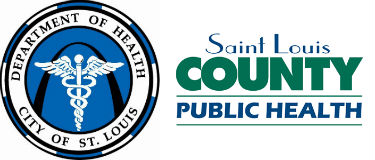St. Louis City and County Pledge Joint Efforts to Combat STD Problem
Health Departments in St. Louis City and County announce joint efforts to combat sexually transmitted diseases in the region.
This article is 10 years old. It was published on November 18, 2015.

NEWS
For Immediate Release
County Media Contact: Craig LeFebvre / Office (314) 615-0166 / Cell (314) 591-9502/ clefebvre@stlouisco.com
City Media Contact: Harold Bailey / Office (314) 657-1568 / baileyh@stlouis-mo.gov
City of St. Louis Department of Health and Saint Louis County Department of Public Health Pledge to Continue Joint Effort to Combat Regional STD Problem
ST. LOUIS, MO –(November 18, 2015)The City of St. Louis Department of Health and the Saint Louis County Department of Public Health both recognize that sexually-transmitted diseases (STDs) are a regional problem that requires a coordinated effort.
"Germs don't recognize geographical boundaries," said Dr. Faisal Khan, director of the Saint Louis County Department of Public Health. "Skinker Boulevard means nothing to them. If we are to respond effectively, we must work together."
"We are committed to working with all of our regional and community partners to help bring down local STD rates," said Melba Moore, acting director and commissioner of health for the City of St. Louis Department of Health, "This has to include the continued coordination of regional prevention efforts, screenings, and treatment."
Added St. Louis County Executive Steve Stenger, "I applaud this effort as it relates directly to my strategic initiative to engage in more preventative public health measures that support optimal health for all residents in the region."
"I am a big proponent of working together as a region to support every St. Louisan," St. Louis Mayor Francis Slay said. "We experience many of the same challenges that are best addressed from a united front, so we will work together to share best practices and programs to benefit the whole region."
On Tuesday, the Centers for Disease Control and Prevention (CDC) issued its annual STD Surveillance Report for 2014.According to the report, rates for Chlamydia and Gonorrhea in the St. Louis Metropolitan Statistical Area (MSA) were above both the state and national rates.
The populations most affected by STDs in the St. Louis region are the same in both the City of St. Louis and St. Louis County.
Almost a third of all new STD cases in the St. Louis region are in those under 25 years of age, with females from 15 to 19 having some of the highest rates of new STD cases. Accordingly, prevention efforts need to include age-appropriate education for teens and young adults and the development and use of web-based options to reach this population.
In addition, there has been an alarming rise nationally in the number of congenital syphilis cases, which, although not apparent in the St. Louis Region, is a reminder to local health officials to vigilantly adhere to all CDC screening recommendations.
STDs are 100% preventable and health officials in both the city and county are reminding parents and guardians to talk candidly to their children about the risks associated with sexual activity and about what steps can be taken to protect themselves and prevent the transmission of STDs.
Said Dr. Khan, "There are a lot of factors at work here and a regional response is required that addresses not only the immediate disease specifics, but also those factors that contribute to the problem such as the lack of health insurance, an inability to cover medical costs, or even a lack of transportation to needed services."
Added Director Moore, "Addressing the problem of STDs will require innovative age-appropriate coalitions, programs, and activities such as Fading Out HIV (a barbershop STD education and awareness initiative) and the Condom Distribution App (mobile application that identifies the location of free condoms). The Supporting Positive Opportunities for Teens –known as The SPOT –is another existing example of a community-based model worth replicating to enhance education and screening opportunities throughout the region."
The two departments will also be working together to establish strong public-private partnerships with community-based organizations, hospitals, health centers, and other agencies to identify additional programs and efforts that are effective at reducing STD rates.
Area youth (and their parents or guardians) are encouraged to visit the youth-centered website www.STLProtectYours.org for STD-related information and resources.
For information about The SPOT, please visit http://TheSPOT.wustl.edu/
###
-
Department:
Department of Health
-
Topic:
Health
Related Resources
Documents
Most Read News
- City of St. Louis Invites Residents to Help Shape the Future of Their Neighborhoods The City of St. Louis continues an ambitious new chapter in community planning with a heavy focus on tornado-impacted neighborhoods, and residents are at the heart of it.
- Delta Air Lines Starts Non-Stop Service To JFK From STL STL is now linked with America’s most connected airport for international flights
- Mayor Cara Spencer Signs Executive Order Updating M/WBE Certification and Contracting Standards Spencer signed Executive Order 91, which resumes under a strong legal framework the City’s issuance of minority/women-owned business enterprise certification.
Help Us Improve This Page
Did you notice an error? Is there information that you expected to find on this page, but didn't? Let us know below, and we'll work on it.
Feedback is anonymous.